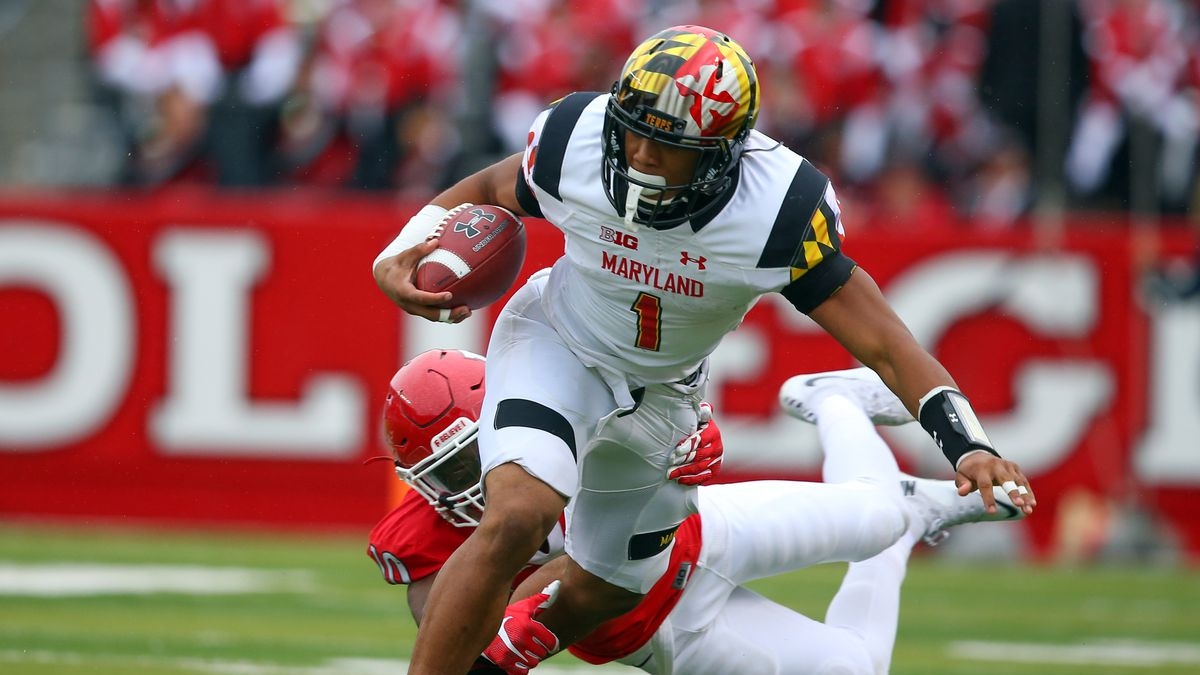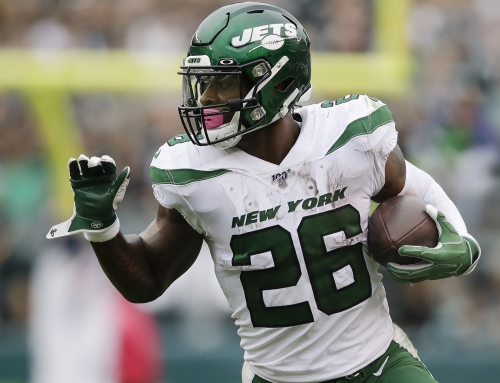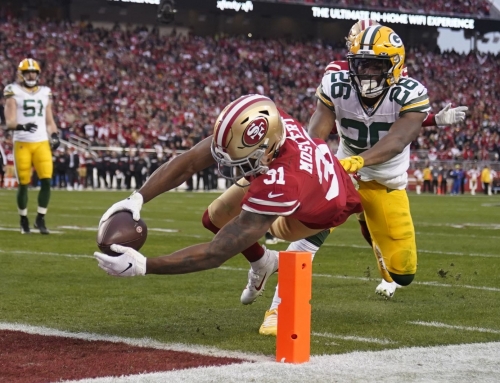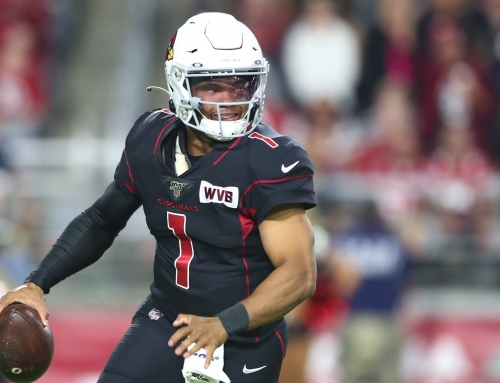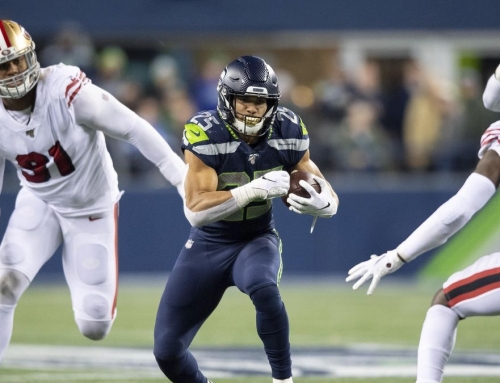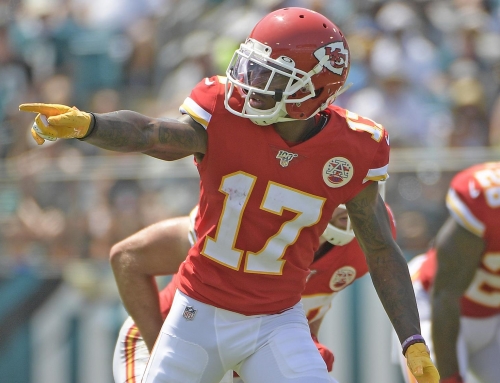Let’s make one thing clear right at the start. There is no single correct rookie ranking. There are a multitude of factors that have yet to be determined, and every rookie has a shot to be the next Adrian Peterson or the next Tavon Austin. However, many of the rookie rankings I see online are missing two essential components that, if included, would make the rankings far more helpful as a guide. For experienced dynasty owners, feel free to skip these next sections and go straight to my rankings.
The first essential component that should be included with rookie rankings is tiers. Tiers are a far more useful tool than strict numeric rankings. You may prefer one player over another, but not all value differences are equal. For example, I prefer Todd Gurley over Ezekiel Elliott, but I would not add a significant amount to Elliott to acquire Gurley. On the other hand, I much prefer Aaron Rodgers to Matt Ryan, and I would need at least a first-round rookie pick in addition to Ryan to part with Rodgers. In the same way, there are certain rookies for which I would pay a significant amount more to acquire than I would for others, even if they are close in my rankings. It’s important to identify where these tiers cut off for you.
Before introducing the second essential component, it’s important to always remember that rookie fever is real. Everyone wants the shiny new toy, and sometimes this can temporarily cloud an owner’s judgment. It’s important to remember that sometimes, no matter how much you want a rookie, it may be more valuable to trade away that pick for an established veteran player. Therefore, the second essential component that should be included with rookie rankings is a suggested veteran that you might be able to acquire for the price of that rookie’s draft pick. With all this said, let’s get to it. Now, this is Part 2 of this two-part series. If you haven’t read Part 1, you can do so here. These rankings are for PPR leagues that start one quarterback.
TIER 3 (cont’d)
This tier of running backs and wide receivers are talented and should contribute immediately for fantasy owners, but all will face competition for touches. This is a deep tier, and I would pursue opportunities to trade down within this tier if any of your league mates really want “their guy” when you’re on the clock.
1.07 | D.J. Moore
There’s not a lot that separates Ridley from Moore from an athletic standpoint, but Moore isn’t quite as polished in his routes as Ridley. The other concern that drops Moore behind Ridley for me is the pairing with Cam Newton and Norv Turner. Turner’s offense often focuses on the run, and Newton isn’t the most accurate passer. I don’t see Moore as a developed enough wide receiver to overtake Devin Funchess on the depth chart, and despite Moore’s speed to get downfield, I still think Torrey Smith will get the first crack at that role. Furthermore, Newton’s penchant to scramble and run along with Christian McCaffrey’s demand for short targets limit Moore’s targets even further. Moore has a high fantasy ceiling if he can develop into a better route runner, but I don’t see much fantasy relevance from him until 2019 at the very earliest.
Alternative: Hunter Henry
Fantasy owners have overdrafted Cowboys and Chargers rookie tight ends for years expecting each year to be the last for Jason Witten and Antonio Gates. Witten is officially retired, and regardless of whether Gates hangs up his cleats, he’s no longer a Charger. Henry is primed for a true breakout fantasy season after showing flashes of potential the last couple of seasons in spite of Gates’s presence ahead of him on the depth chart.
1.08 | Ronald Jones II
Jones is a dynamic runner who can make some truly spectacular cuts, but his vision isn’t the best, and I’m not sure he’s built to be the workhorse in Tampa Bay like many are projecting him to be. I do expect Jones to lead the committee, but Peyton Barber and the other backs may still see quite a few touches. Additionally, while Jones’ poor combine performance can be attributed to the strained hamstring and is not a detriment to his ranking, the hamstring injury itself is. I’m no doctor, but per Stephania Bell at ESPN, it’s very possible that this soft tissue injury can linger and resurface during training camp or early on in the season. For a running back that I already see as being part of a committee, another setback could easily drop him down the depth chart. I would be averse to drafting Jones earlier than this in the first round.
Alternative: Doug Baldwin
Paul Richardson and Jimmy Graham are both gone, and Seattle’s once-vaunted Legion of Boom is a shell of its former self. Baldwin has always been underrated in fantasy leagues, but expect a lot of targets for Russell Wilson’s go-to receiver while the Seahawks play from behind this year. Baldwin may be the most discounted wide receiver right now given his history of WR1 production in PPR leagues.
1.09 | Christian Kirk
It was recently revealed that Kirk was arrested for drunkenly throwing rocks at parked cars at the Waste Management Phoenix Open back in February. While this is unbecoming behavior, I’m willing to write off this incident as a foolish mistake for a 21-year old and nowhere near as serious a concern as a hypothetical rookie with a history of domestic violence or sexual assault. Now back to football. Kirk is an excellent slot receiver who can get consistent separation on short and intermediate routes and makes strong catches in traffic. He now has a chance to develop his game further under the tutelage of Larry Fitzgerald. However, this pro is also a con in that Fitzgerald will likely be the starting slot receiver for at least 2018. Kirk may struggle if he is forced to play outside, much like Nelson Agholor did for the first two seasons of his NFL career. Kirk has a lot of fantasy potential, but Fitzgerald’s presence likely eliminates any chance of Kirk producing strong fantasy stats in his rookie year.
Alternative: Golden Tate
Incidentally, Kirk’s physical traits and strengths profile him similarly to Tate. So if you’re ready to contend now, it would make perfect sense to swap Kirk for Tate. Matthew Stafford spreads the ball around a fair amount, but Tate is Stafford’s outlet receiver, and he also has a knack for creating yards after the catch with his elusiveness. He will likely lead the Lions in receptions again in 2018 en route to another fantasy WR2 finish.
1.10 | James Washington
The Steelers likely had Washington as a clear draft target, leading them to trade away Martavis Bryant to the Raiders the night before drafting Washington. As Bryant’s replacement, Washington has similar top-end speed as a vertical threat but is better at tracking the ball in the air and consistently winning on those deep-ball catches. While an elite Antonio Brown and rising star JuJu Smith-Schuster will prevent Washington from seeing many targets, he will inevitably break a few long touchdowns this year and make some highlight-reel catches in the process. Ultimately, Washington will be inconsistent, but his fantasy upside in this offense in the event of an injury to Brown or Smith-Schuster garners him a late first-round grade from me.
Alternative: Alex Collins
If the top tiers of rookie running backs are gone in your draft, Collins has a decent shot to finish as an RB2 in fantasy this coming season. He will be the clear lead back for Baltimore despite ceding some touches in the passing game, and the Ravens offense should yield more scoring opportunities for Collins this year after upgrading their receiving corps with the additions of Michael Crabtree and John Brown.
TIER 4
Both of the following running backs will have an opportunity to contribute early, but I see both as average talents who are destined to be committee backs. There isn’t a whole lot of separation between them and other rookies available in the second round, and I would aggressively shop these picks if possible.
1.11 | Kerryon Johnson
Johnson can find lanes and has some burst to his game, but he’s an exceedingly average runner who gets tackled rather easily given his size. Detroit has struggled for years to develop a running game, and I’m not sure Matt Patricia has the fix given the state of the offensive line. Additionally, while Johnson is a decent pass-catcher and blocker, Theo Riddick is still likely to see a bulk of the receiving work with LeGarrette Blount stealing goal line touches for at least this season. Johnson is likely the best running back on Detroit’s roster, but I’m not sure that will equate to a workhorse role or fantasy success. I see him as a flex option in fantasy, maybe an RB2 if he can dazzle the coaching staff early on and earn a larger role by breaking some big plays in the preseason.
Alternative: Tevin Coleman
While I disagree with the notion that an NFL team will sign Coleman to be a workhorse back after his contract is up in 2019, he is a valuable handcuff to Devonta Freeman and has standalone flex value week to week in PPR leagues. Coleman’s price seems to be consistently rising, and if he does leave Atlanta after this season, there will likely be a window to sell him at a profit for an early-to-mid 2019 first-round rookie pick next offseason.
1.12 | Royce Freeman
Much like Johnson on the Lions, Freeman’s path to fantasy relevance seems muddled at best with the Broncos. Honestly, Freeman reminds me of a slightly shiftier Eddie Lacy, which is not a comparison you want to hear when considering using a first-round rookie pick on a prospect. This is ironic given that the Broncos nearly drafted Lacy in 2013 and opted for Montee Ball instead due to concerns with Lacy’s toe surgery. Freeman runs with power and has decent vision, but he lacks the elusiveness and speed to break many big plays on his own. A big concern is that Case Keenum may regress with Bill Musgrave calling the shots after Pat Shurmur successfully hid a lot of Keenum’s shortcoming in Minnesota last season. Freeman can succeed in a good offense much as Lacy did in Green Bay for a while, but I’m not sure Freeman can power this offense, especially if Keenum takes a step back.
Alternative: Will Fuller
Did you know that in four games played with Deshaun Watson last year, Fuller averaged 20.7 points per game? That would’ve made him the WR3 just behind teammate DeAndre Hopkins. Of course, Fuller scored a completely unsustainable 1.8 touchdowns per game during that stretch, and his scoring rate will inevitably regress. However, the fact remains that with defenses focused on stopping Hopkins, Fuller will get a lot of deep passes from Watson this year, making him a solid bet to produce as a boom-or-bust WR2 or WR3 in fantasy.
There you have it. Best of luck in your rookie drafts, and remember that these rankings are merely a guide. Feel free to overpay to acquire a rookie you like regardless of the consensus or skip over a rookie even if many have him ranked higher. You might just be skipping over the next Laquon Treadwell for the next Michael Thomas.
For more fantasy football and dynasty content, follow me on Twitter @FFA_Meng.


